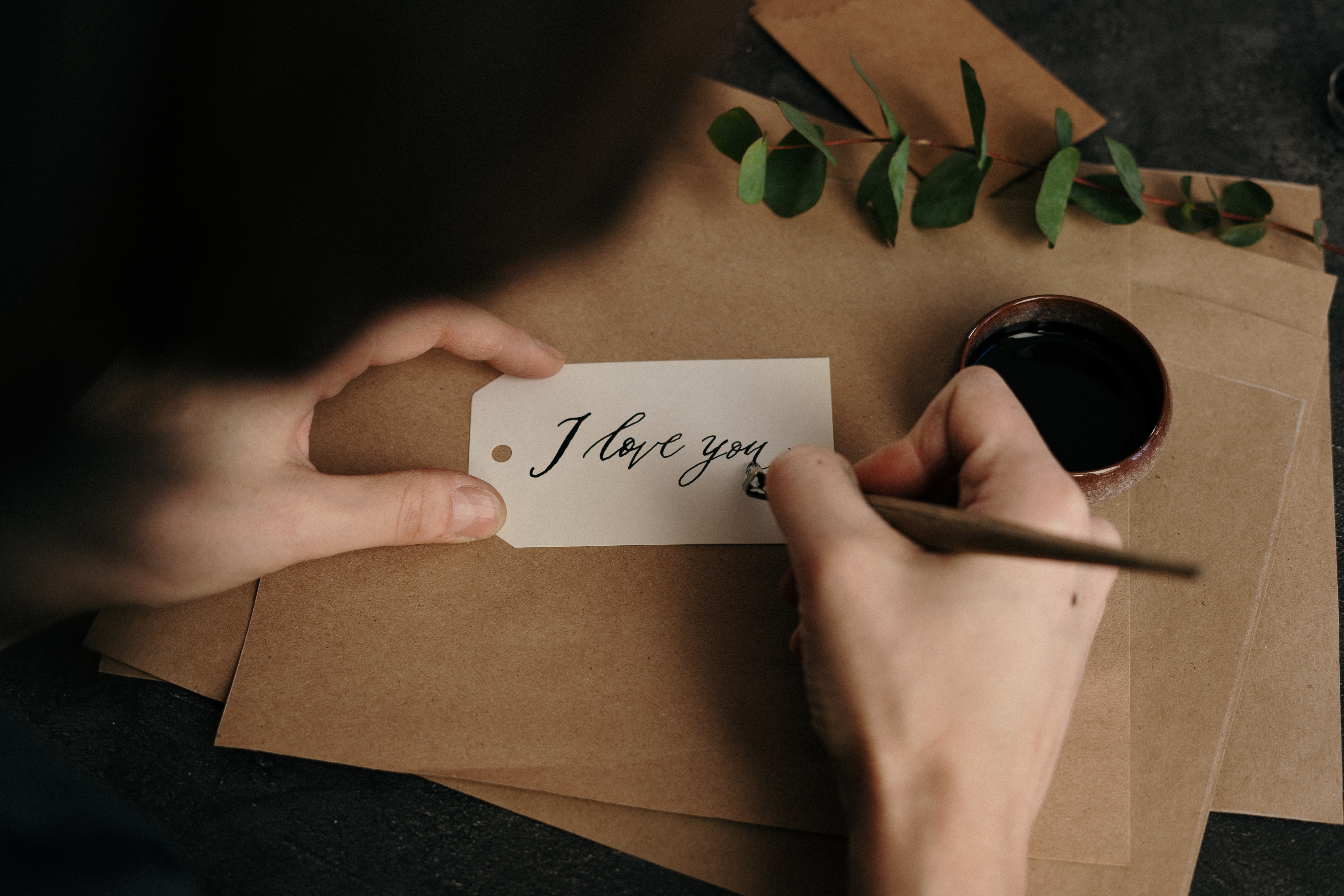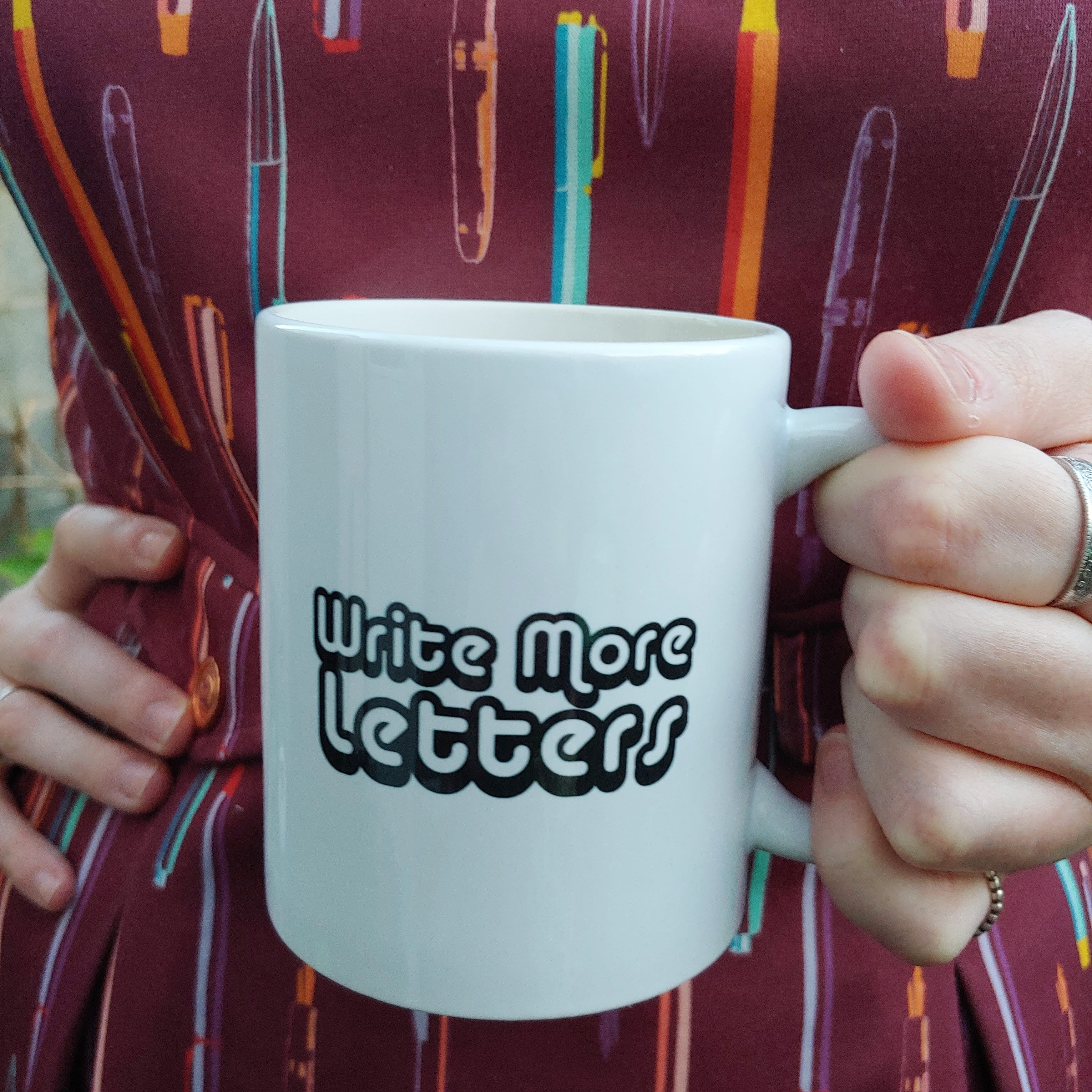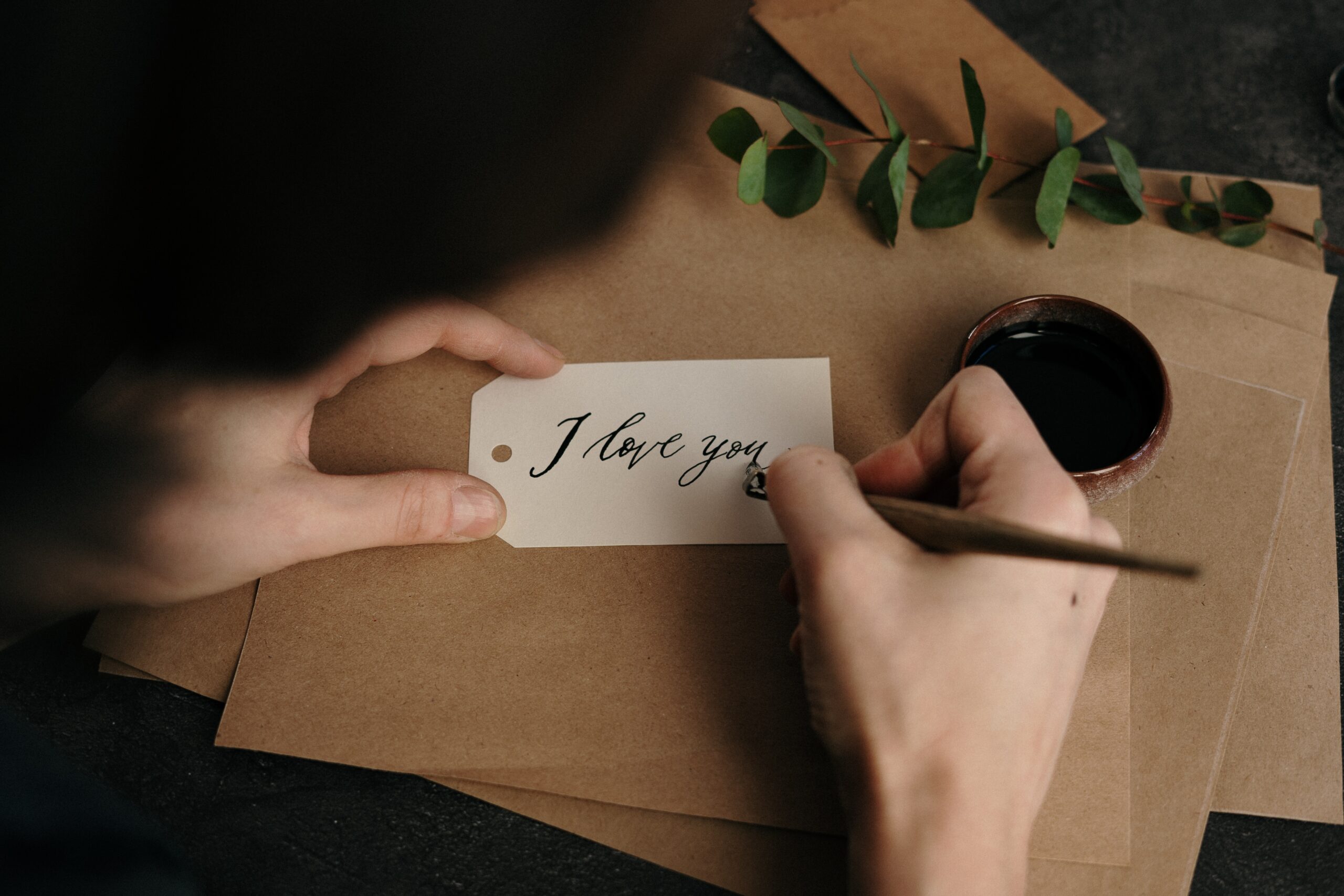
Communication has developed drastically over the past century. Letters are, to the modern eye, a token of the past, a sentimentality to admire for several moments but not worthy of deep consideration. In the sphere of social media, individuals bask in brevity. People send quick texts, rash rants, reminders; it’s fast and furious. There is no time, it appears, for slow, measured words or lengthy texts.
Love, whether it be romantic, platonic, or familial, is expressed through physical affection, emblems of gratitude, or acts of service. Our culture glorifies flamboyant gifts; gifts that can be exhibited to hundreds of viewers, gifts that garner envy and admiration.
Although a display of gratitude for a gift is not intrinsically wrong, gifts lose a degree of value when their sole purpose is to bask in limelight, and not be treasured by the recipient.
In the past, love letters contained words that (often) only two individuals knew and read. Letter-writing was a necessary art, for it was not only the sole means of communication but also of expression. And I believe that the art and the history of letters is worth preserving.
Letters are thoughtful
As Callum Sharp writes in “Why writing letters is still important” at Writing Cooperative, “Handwriting is conscious writing, and conscious writing is good practice.”
A love letter is, to be circular, a letter of love. When an individual sits down to write a letter, they are conscious of their mission. While a quick text or email formed from the depths of busy thought may express some degree of consideration, a letter draws one away from distraction and into introspection. It requires the writer to think well about what they want to convey and how to convey it effectively.
Letters last
The well-known saying “quality over quantity” applies to the topic of communication. One well-crafted message leaves a more lasting impression than a hundred short emails. Yet, brevity and speed seem to wear the crown in social media, appearing in the forms of short captions and sound bites. Time is expensive, it appears. Which makes the conscious effort of crafting a letter even more valuable.
Letters live on long after their recipient has read (and perhaps memorized) the words. They are treasured in a way that an email or text message never could be. Even in a world adapted to digitalization, individuals have a longing for the tangible (as evident in the continual preference for physical books over electronic ones). This rare essence of physicality adds to its worth.
Furthermore, whenever someone writes, they leave a legacy. The grocery lists, the margin annotations, the newspaper publications reflect who the individual is (or was) and how they viewed the world.
If by writing, one leaves a legacy, humans should seize this opportunity to make their impression potent.
Individuals should spend less time quibbling over remarks in the comment section and more time sending notes of gratitude. They should spend less time ranting to an unknown audience and more time writing in a journal. They should spend less time texting their loved ones — separated by a digital medium — and more time sending letters. There are many lovely alternatives for leaving a potent legacy.
Letters contain the soul of a person
“The letters are a treasure to me,” [Teri Elaine] adds. “I notice every little dot and tittle. I can almost feel Joe’s physical presence with me as I read them — they still take my breath away.” — Mary May Larmoyeux, “Legacy of a Love Letter”
Handwriting can reflect a lot about a person. It is, in essence, a part of them. It’s the language of their fingers, the shifts of emotion they experience as their thoughts hurry and slow, wave and flourish.
Carolyn Porter, a type designer and storyteller, recognized this when she first laid eyes on a collection of letters in a Minnesotan antique store. On a hunt for font inspiration, the “expressive” typography enchanted her. She purchased them and began to use the writer’s (alphabet) letters to create a font, which she later named Marcel. During this process of typography, she had the letters translated from French to English and discovered that Marcel was “a Frenchman conscripted to work in a German labor camp during World War II.” His love letters were addressed to his wife and children who lived leagues away from him during the War. Porter documented her “passion project” in a Tedx talk — it’s a fascinating story, do have a listen. What began as an admiration for the form of the writer’s handwriting led to a deeper understanding of the writer himself.
All this to say, the soul of a person is traced on the page. In letters of love, their words are imprinted on the heart of another. Thus, leaving, as I stated previously, a tangible legacy, one that can be treasured long after their spirit has left the earth.
A SPECIAL INTERVIEW

Liz Maguire, the founder of Flea Market Love Letters
Liz Maguire is the creator and curator of a digital archive of vintage love letters, called Flea Market Love Letters. Flea Market Love Letters was begun in 2017 in Washington D.C. and in 2018 moved with Liz to Dublin, Ireland. There are some three hundred letters which have been transcribed and many more to come. The archive has stories from both World Wars, the Roaring 1920s, the Great Depression and even some detailing Queen Elizabeth II’s Coronation! Liz believes that letters capture a moment in time and she is delighted that readers have come to Flea Market Love Letters both share in the stories featured but also share their own letter stories. She believes that everyone has a letter story and that Flea Market Love Letters should be a place for celebrating that!
1) What inspired you to embark on your project?
I began the archive in 2017 after I had been collecting vintage letters from flea markets in the U.S. for years prior. I always loved the handwriting, old envelopes, and stories that the letters held and felt drawn to protecting them. In 2017 I realized that if something happened to my little collection there would be no record of them ever existing so I started photographing and transcribing them and sharing to Instagram. In 2019 I built the Flea Market Love Letters website where you can read more of the letters today, and in 2020 I relaunched the site with the help of a web developer. In 2021 I also launched the Flea Market Love Letters YouTube channel where I hope to post more videos to the small catalogue I’ve built already on finding and preserving vintage letters. None of this would be possible without the help and support of friends and family, my partner Sam, or the wonderful folks around the world like my Web Developer in Australia or my videographer in Dublin who help make the archive what it is!
2) Why do you believe letter-writing and preserving the legacy of letters is important?
I believe that the act of writing and sending a letter is one of the last truly authentic ways you can connect with someone in today’s digital world. The COVID-19 Pandemic really drove home that human instinct for connectivity and community and I was delighted to discover that letter writing was alive and well in 2020 through other projects like The Handwritten Letter Appreciation Society, the charity ‘From Me to You’, and the penpal exchange program “Penpalooza”. While I will always advocate for letter writing I also understand and appreciate the usefulness of technology in allowing for accessibility for letter writers with disabilities. I think that if you’re writing a letter with pen and paper, on a typewriter, or typing it up and printing it as long as there’s an envelope and stamp involved the integrity of the letter is still true!
3) How has the establishment of Flea Market Love Letters shaped you and your view of the world?
My view of the world has been shaped by Flea Market Love Letters through the building of community and the establishment of the ‘Write More Letters’ Project. The ‘Write More Letters’ Project benefits the charity Hope For The Warriors which helps U.S. Veterans and Military Families. Through the sale of shirts, masks, and mugs the Flea Market Love Letters community has raised funds for Hope For The Warriors while advocating for letter writing. As someone who collects vintage letters which are largely written by veterans I am wholly thankful for the opportunity to give back. I do not profit from Flea Market Love Letters nor from the ‘Write More Letters’ Project. 100% of funds raised go to charity.
4) Out of the love letters you’ve curated, is there a particular letter that stands out to you/is imprinted in your memory?
It’s hard to say that there are favourites but there are certainly ones that stand out. In 2020 as COVID-19 was taking over the world and news I was transcribing a series of World War I letters from 1918 (The Bushnell Letters) in which the young man writing was talking about the “Flu” at the time, which was of course the Spanish Flu. To be able to hold a letter that was 102 years old in my hand and feel that link was surreal and really drove home the point of the archive.
5) What are you currently researching/curating?
We’re currently transcribing over one hundred letters from World War II in 2021 at Flea Market Love Letters H.Q. Anyone who is interested in that can find us on Instagram (@fleamarketloveletters) or online at our website.
It was a joy to interview Liz and learn more about her wonderful business! Do be sure to check out her website and instagram page — they are filled with loveliness.
Here are several other resources for those interested in learning more about letters from the past or brightening the lives of others through writing their own.
- Letter’s Live
- Flea Market Love Letters
- Carolyn Porter’s Blog
- Write a letter to an elderly person at Ready to Care
- And, of course, find your address book and continue the letter-writing legacy. 🙂
Do you delight in reading old letters or writing your own? Why do you think letter-writing is important? Did you enjoy reading my interview with Liz?
Let me know in the comments. I love to hear your thoughts! And, if you enjoyed this post, I encourage you to follow the blog and share it with other kindred spirits who would enjoy the content.
Yours,
Abigail


7 responses to “The Legacy of Love Letters (& a special interview)”
I really liked this! I don’t write letters very much, but I have fun writing them whenever I do. I also love receiving letters… It’s much more meaningful.
During quarantine, my boyfriend (now fiance 🙂 ) and I wrote letters to each other, and I can testify that it can be so special! And pretty much everything you said about them 🙂 Cool post!
That’s so sweet! How wonderful that you were able to do that. 🙂 Thank you for reading, Sierra!
Your post comes at a very fortuitous time. Last winter during the long Covid days sister Jill and I read letters that were found filed in drawers that I had kept when our mom died. They were letters between our mom and dad (your great- grand parents) dating in the 1940’s and they are truly poignant communication between a couple that had true love and respect for one another which continued throughout their 63 years together. Perhaps you’d like to take a look at them when you’re here.
Oh wow – what a wonderful legacy and treasure! Yes, I’d love that very much. (:
I love this so much! Letter writing has been such a beautiful part of my life. And I completely agree. The interview was amazing, I am definitely going to check out Flea Market Love Letters. 😉 Thank you for this post!!
Hi Josie! Letter-writing is a powerful art to master, and I’m glad you have. Do check Liz’s company out — her work is fantastic. Thank you for reading and for your lovely comment!